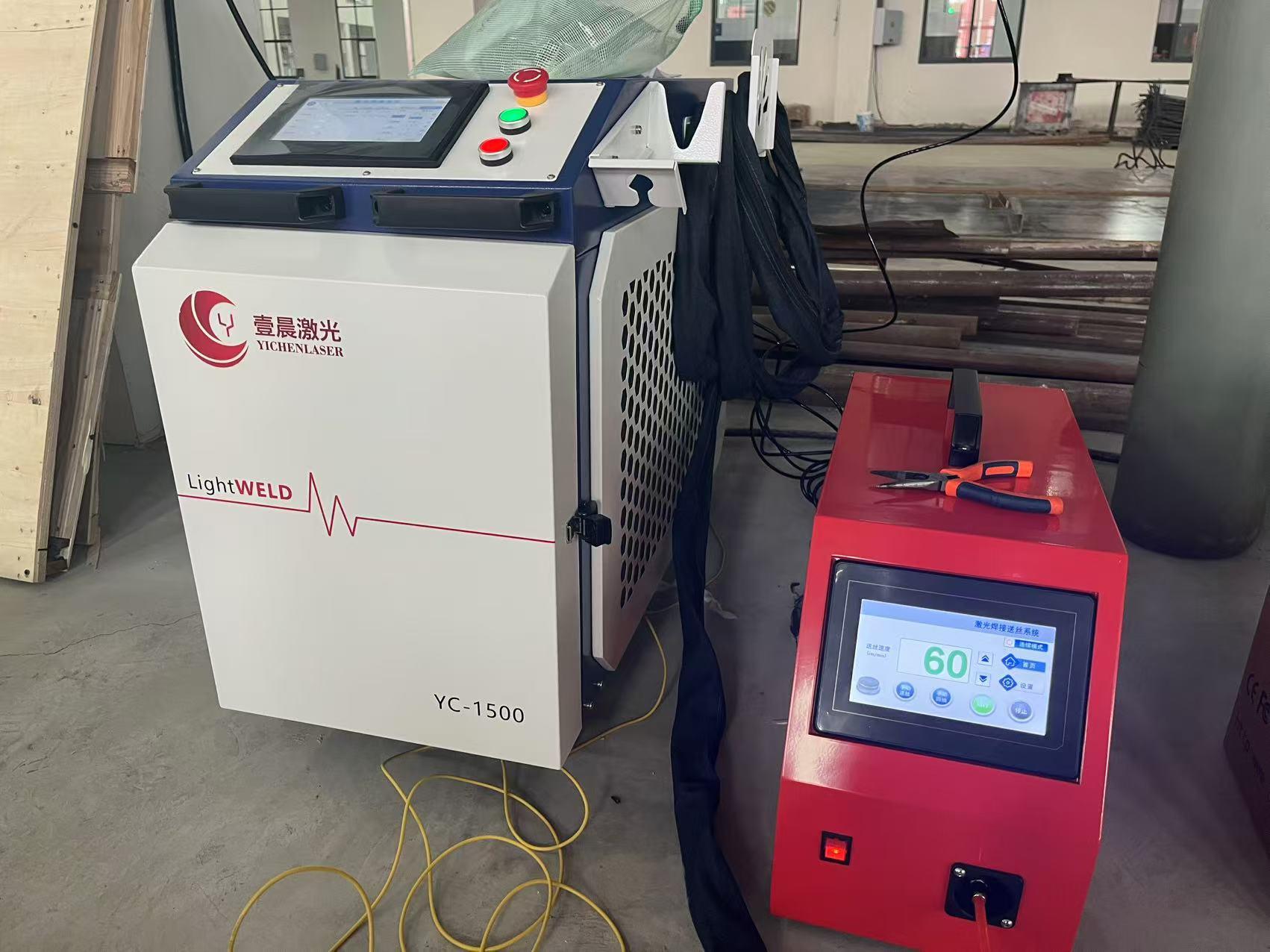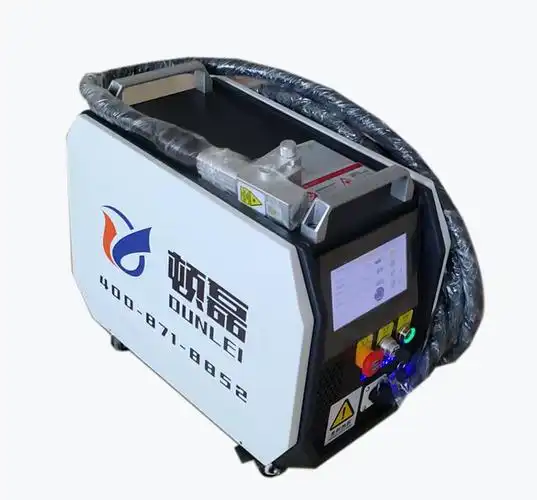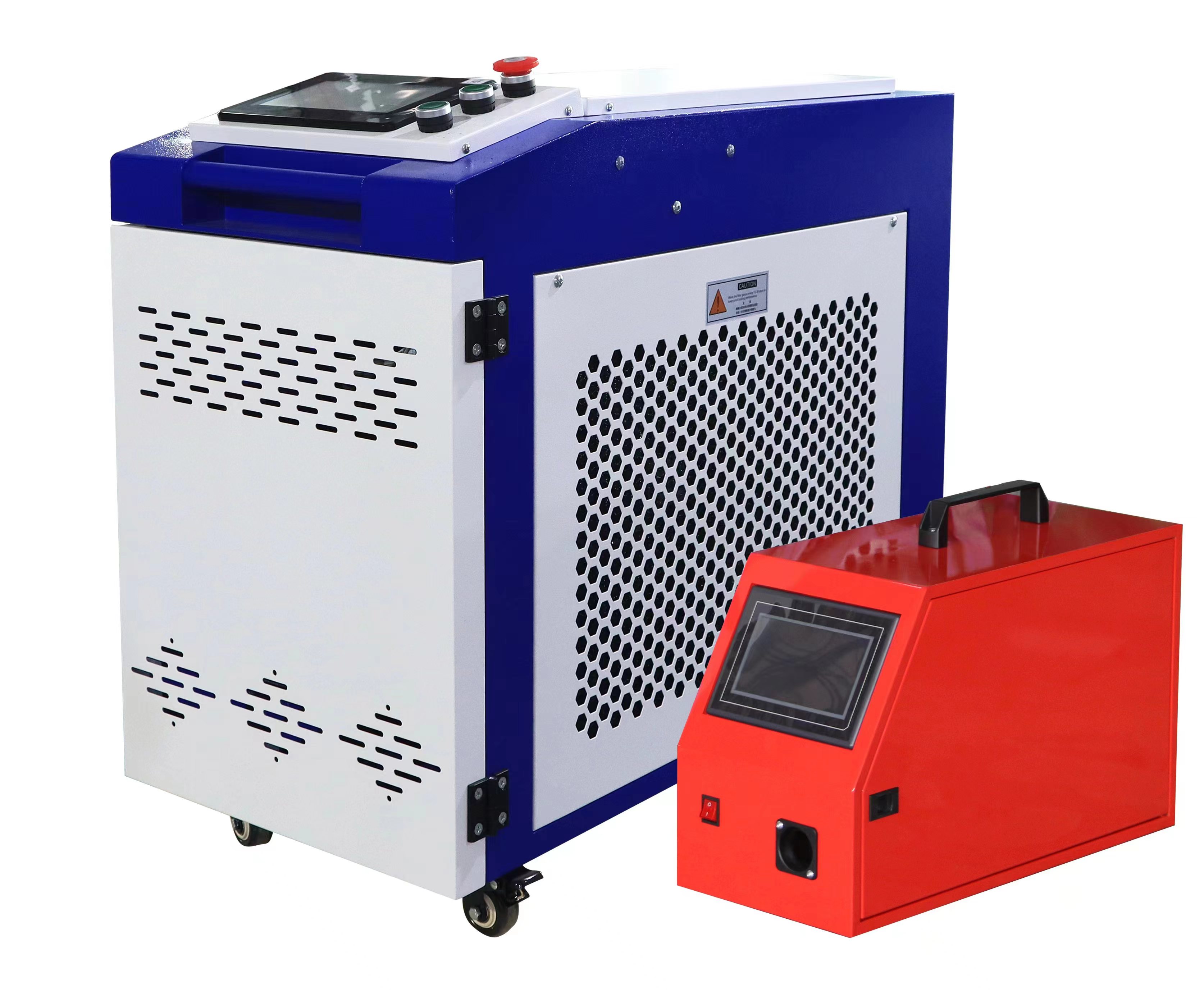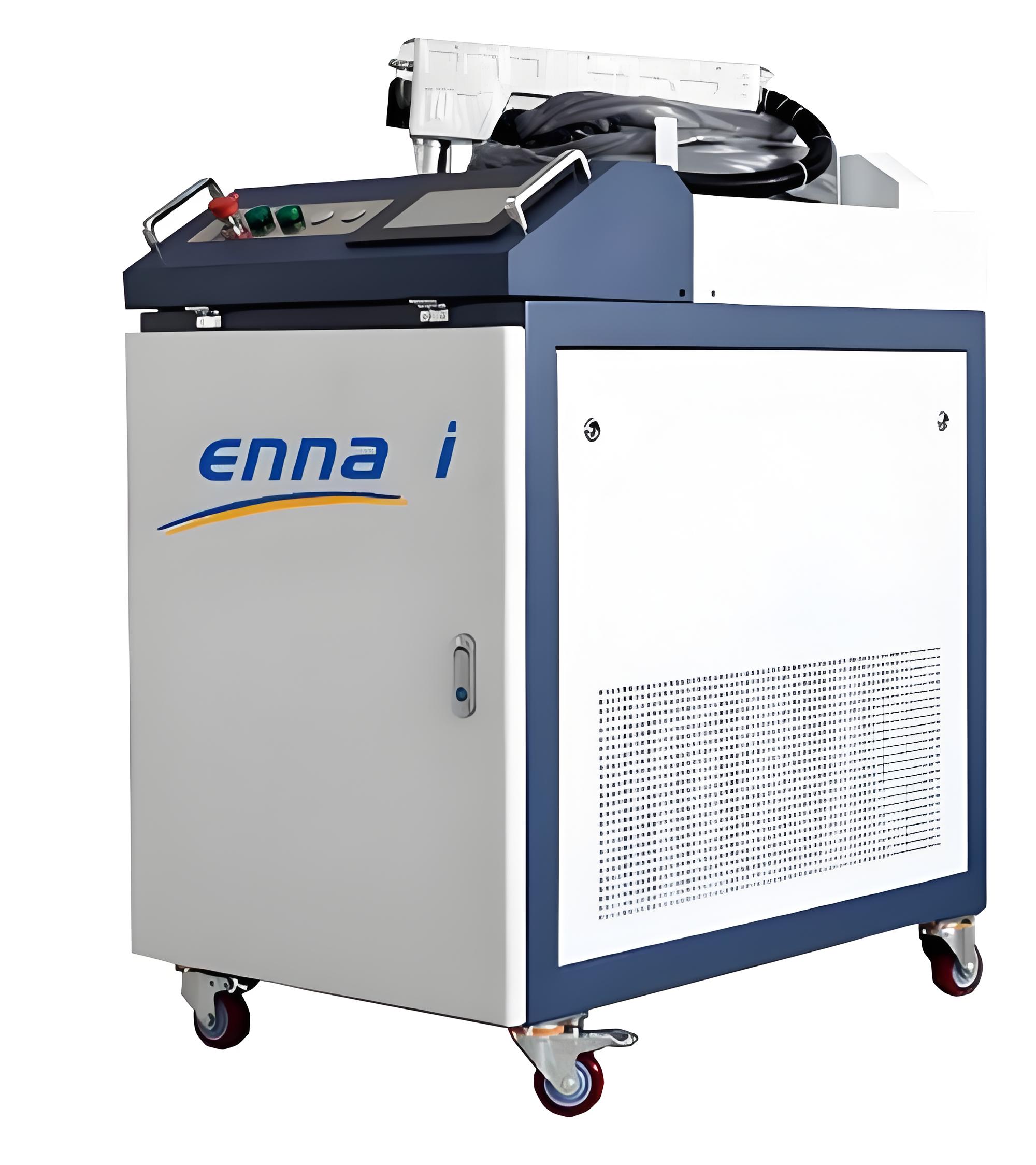As an expert in the laser technology industry, I’ve encountered numerous questions about the various applications and differences between different types of laser machines. One of the most common queries I receive is about the distinctions between laser rust removal machines and laser marking machines. In this article, I’ll delve into this topic, explaining the core differences, applications, and considerations for each type of machine.
Understanding the Basics of Laser Technology
Before diving into the specifics of laser rust removal machines and laser marking machines, it’s essential to understand the basics of laser technology.
What is a Laser?
A laser, which stands for “Light Amplification by Stimulated Emission of Radiation,” is a device that emits light through a process of optical amplification based on the stimulated emission of electromagnetic radiation. Lasers are characterized by their high coherence, monochromaticity, and directionality, making them ideal for a wide range of applications.
How Do Lasers Work?
Lasers work by exciting atoms or molecules to higher energy levels, causing them to emit photons. These photons then stimulate other atoms or molecules to emit more photons of the same wavelength, phase, and direction, creating a coherent beam of light. This beam can be focused to a very small point, allowing for precise manipulation of materials.

Laser Rust Removal Machines: An Overview
Now, let’s explore laser rust removal machines in detail.
What is a Laser Rust Removal Machine?
A laser rust removal machine, also known as a laser cleaning machine, uses high-energy laser beams to remove rust, paint, coatings, and other contaminants from surfaces. The laser beam interacts with the contaminants, causing them to vaporize or flake off, leaving the underlying surface clean and undamaged.
How Does a Laser Rust Removal Machine Work?
Laser rust removal machines work by directing a focused laser beam onto the surface to be cleaned. The laser energy is absorbed by the contaminants, causing them to heat up rapidly and either vaporize or flake off. The underlying surface remains unaffected because the laser energy is absorbed primarily by the contaminants due to differences in their optical properties.
Applications of Laser Rust Removal Machines
Laser rust removal machines have a wide range of applications, including:
Automotive Industry: Removing rust and paint from car bodies and components.
Aerospace Industry: Cleaning aircraft parts and surfaces.
Marine Industry: Removing rust and marine growth from ship hulls and equipment.
Construction Industry: Cleaning steel structures and bridges.
Historical Preservation: Restoring historical artifacts and monuments by removing rust and contaminants without damaging the underlying surface.
Advantages of Laser Rust Removal Machines
Laser rust removal machines offer several advantages over traditional cleaning methods, including:
Precision: Laser beams can be focused to a very small point, allowing for precise cleaning of specific areas.
Non-Contact: Laser cleaning is a non-contact process, reducing the risk of damage to the underlying surface.
Environmentally Friendly: Laser cleaning produces no waste or chemicals, making it an environmentally friendly option.
Efficiency: Laser rust removal machines can clean surfaces quickly and efficiently, reducing downtime and labor costs.

Laser Marking Machines: An Overview
Next, let’s explore laser marking machines in detail.
What is a Laser Marking Machine?
A laser marking machine uses a laser beam to create permanent marks on various materials, including metals, plastics, ceramics, and glass. These marks can include text, logos, barcodes, serial numbers, and other identifiers.
How Does a Laser Marking Machine Work?
Laser marking machines work by directing a focused laser beam onto the surface to be marked. The laser energy interacts with the material, causing localized heating, melting, vaporization, or chemical changes that result in a permanent mark. The type of mark created depends on the laser parameters, material properties, and marking technique used.
Types of Laser Marking Techniques
There are several types of laser marking techniques, including:
Engraving: Removing material from the surface to create a depression or groove.
Annealing: Heating the surface of the material to change its color or texture without removing material.
Staining: Creating a chemical change in the material that results in a visible mark.
Foaming: Creating a porous surface texture by vaporizing material, resulting in a light-colored mark.

Applications of Laser Marking Machines
Laser marking machines have a wide range of applications, including:
Manufacturing Industry: Marking parts and components with serial numbers, batch codes, and other identifiers for traceability and quality control.
Electronics Industry: Marking circuit boards, connectors, and other electronic components with barcodes, logos, and text.
Medical Industry: Marking medical devices and instruments with identifiers for traceability and safety.
Automotive Industry: Marking car parts and components with VIN numbers, logos, and other information.
Jewelry Industry: Marking jewelry with hallmarks, logos, and personalized messages.
Advantages of Laser Marking Machines
Laser marking machines offer several advantages over traditional marking methods, including:
Permanence: Laser marks are permanent and resistant to wear, fading, and corrosion.
Precision: Laser beams can be focused to a very small point, allowing for precise marking of text, logos, and other identifiers.
Flexibility: Laser marking machines can mark a wide range of materials and shapes, making them highly versatile.
Speed: Laser marking is a fast process, allowing for high-volume production runs.
Comparing Laser Rust Removal Machines and Laser Marking Machines
To better understand the differences between laser rust removal machines and laser marking machines, let’s consider the following table:
| Feature | Laser Rust Removal Machine | Laser Marking Machine |
|---|---|---|
| Primary Function | Removing rust, paint, and contaminants from surfaces | Creating permanent marks on surfaces |
| Laser Parameters | High energy, short pulse duration for vaporization or flaking | Lower energy, longer pulse duration for localized heating or chemical changes |
| Material Interaction | Absorption of laser energy by contaminants, leaving underlying surface unaffected | Interaction with material to create marks through heating, melting, vaporization, or chemical changes |
| Applications | Automotive, aerospace, marine, construction, historical preservation | Manufacturing, electronics, medical, automotive, jewelry |
| Output | Clean, contaminant-free surface | Permanent mark (text, logo, barcode, etc.) |
Key Differences Explained
Primary Function: The primary function of a laser rust removal machine is to clean surfaces by removing rust, paint, and other contaminants. In contrast, a laser marking machine’s primary function is to create permanent marks on surfaces for identification, traceability, or aesthetic purposes.
Laser Parameters: Laser rust removal machines typically use high-energy, short-pulse-duration lasers to vaporize or flake off contaminants. Laser marking machines, on the other hand, use lower-energy, longer-pulse-duration lasers to create localized heating or chemical changes that result in a permanent mark.
Material Interaction: In laser rust removal, the laser energy is absorbed primarily by the contaminants, leaving the underlying surface unaffected. In laser marking, the laser energy interacts with the material itself, causing heating, melting, vaporization, or chemical changes that result in a visible mark.
Applications: Laser rust removal machines are commonly used in industries where surface cleaning is essential, such as automotive, aerospace, marine, construction, and historical preservation. Laser marking machines are widely used in manufacturing, electronics, medical, automotive, and jewelry industries for marking parts and components with identifiers.
Output: The output of a laser rust removal machine is a clean, contaminant-free surface. The output of a laser marking machine is a permanent mark, which can include text, logos, barcodes, serial numbers, and other identifiers.

Practical Considerations for Choosing Between Laser Rust Removal Machines and Laser Marking Machines
When deciding between a laser rust removal machine and a laser marking machine, there are several practical considerations to keep in mind.
Application Needs
First and foremost, consider your specific application needs. If you need to remove rust, paint, or other contaminants from surfaces, a laser rust removal machine is the right choice. If you need to create permanent marks on surfaces for identification, traceability, or aesthetic purposes, a laser marking machine is more suitable.
Material Compatibility
Consider the materials you’ll be working with. Laser rust removal machines can work on a wide range of materials, including metals, plastics, ceramics, and glass, as long as the contaminants can be removed without damaging the underlying surface. Laser marking machines also work on a variety of materials, but the marking technique and laser parameters may need to be adjusted based on the material properties.
Budget and Cost Considerations
Laser rust removal machines and laser marking machines can vary significantly in price depending on their features, capabilities, and brand. Consider your budget and cost considerations when making a decision. Keep in mind that while laser machines may have a higher upfront cost, they can offer long-term savings in terms of efficiency, precision, and reduced labor costs.
Maintenance and Support
Consider the maintenance and support requirements for each type of machine. Laser machines require regular maintenance to ensure optimal performance and longevity. Look for a reputable supplier that offers comprehensive maintenance and support services, including training, troubleshooting, and spare parts availability.
Safety Considerations
Laser machines can pose safety risks if not used properly. Consider the safety features and requirements for each type of machine. Ensure that your staff is trained in safe laser operation and that appropriate safety measures are in place, such as laser safety goggles, protective barriers, and emergency stop buttons.
Real-World Examples and Case Studies
To further illustrate the differences and applications of laser rust removal machines and laser marking machines, let’s look at some real-world examples and case studies.
Example 1: Automotive Manufacturer
An automotive manufacturer needed to remove rust and paint from car bodies before applying a new coat of paint. They decided to invest in a laser rust removal machine because of its precision, non-contact cleaning capabilities, and environmental friendliness. The laser rust removal machine allowed them to clean car bodies quickly and efficiently, reducing downtime and labor costs while improving the quality of the final paint finish.
Example 2: Electronics Manufacturer
An electronics manufacturer needed to mark circuit boards with serial numbers and batch codes for traceability and quality control. They chose a laser marking machine because of its precision, flexibility, and speed. The laser marking machine allowed them to mark circuit boards with high accuracy and consistency, improving production efficiency and product quality.

Example 3: Medical Device Manufacturer
A medical device manufacturer needed to mark surgical instruments with identifiers for traceability and safety. They opted for a laser marking machine because of its ability to create permanent, high-contrast marks on metal surfaces. The laser marking machine allowed them to mark surgical instruments with precision and clarity, ensuring compliance with regulatory requirements and improving patient safety.
Addressing Common Misconceptions and Questions
Despite the many benefits of laser rust removal machines and laser marking machines, there are still some common misconceptions and questions that need to be addressed.
Misconception 1: Laser Machines Are Too Expensive
While laser machines may have a higher upfront cost compared to traditional cleaning or marking methods, it’s important to consider the long-term savings in terms of efficiency, precision, and reduced labor costs. Additionally, laser machines can offer improved product quality and compliance with regulatory requirements, which can translate into increased customer satisfaction and business growth.
Misconception 2: Laser Machines Are Difficult to Use
While laser machines may seem complex at first glance, they are actually quite intuitive and easy to use with proper training. Most laser machines come with user-friendly interfaces and software that allow for easy setup, operation, and maintenance. Additionally, many suppliers offer comprehensive training and support services to ensure that your staff is proficient in laser operation.
Question 1: Can Laser Rust Removal Machines Damage the Underlying Surface?
No, laser rust removal machines are designed to remove contaminants without damaging the underlying surface. The laser energy is absorbed primarily by the contaminants due to differences in their optical properties, leaving the underlying surface unaffected. However, it’s important to use the appropriate laser parameters and marking technique to ensure optimal results.
Question 2: Can Laser Marking Machines Mark All Types of Materials?
Laser marking machines can mark a wide range of materials, including metals, plastics, ceramics, and glass. However, the marking technique and laser parameters may need to be adjusted based on the material properties. Some materials may require special coatings or treatments to improve markability. It’s important to consult with a laser technology expert to determine the best marking solution for your specific application.

Conclusion
In conclusion, laser rust removal machines and laser marking machines serve different purposes and have distinct applications in various industries. Laser rust removal machines are ideal for cleaning surfaces by removing rust, paint, and other contaminants, while laser marking machines are used to create permanent marks on surfaces for identification, traceability, or aesthetic purposes.
When deciding between a laser rust removal machine and a laser marking machine, consider your specific application needs, material compatibility, budget and cost considerations, maintenance and support requirements, and safety considerations. With the right laser machine, you can improve production efficiency, product quality, and customer satisfaction while reducing labor costs and environmental impact.
If you’re still unsure which type of laser machine is right for your application, don’t hesitate to reach out to a laser technology expert for guidance and support. They can help you assess your needs, evaluate different options, and make an informed decision that meets your specific requirements and budget.
Related Q&A
Q1: Can a laser machine perform both rust removal and marking functions?
A1: While some laser machines may offer multiple functions, including rust removal and marking, it’s important to note that these are typically specialized machines designed for specific applications. A machine optimized for rust removal may not be the best choice for marking, and vice versa. It’s generally more effective to choose a machine that’s specifically designed for your primary application.
Q2: Are laser machines safe to use in industrial environments?
A2: Yes, laser machines can be safe to use in industrial environments when proper safety measures are in place. This includes using laser safety goggles, protective barriers, and emergency stop buttons. Additionally, staff should be trained in safe laser operation and follow all safety guidelines and regulations.
Q3: How long do laser machines typically last?
A3: The lifespan of a laser machine can vary depending on several factors, including the quality of the machine, frequency of use, maintenance practices, and operating conditions. With proper maintenance and care, a high-quality laser machine can last for many years, providing reliable performance and value.
Q4: Can laser machines be used for outdoor applications?
A4: While some laser machines may be suitable for outdoor applications, it’s important to consider the environmental conditions and potential challenges, such as exposure to sunlight, dust, moisture, and temperature fluctuations. It’s best to consult with a laser technology expert to determine if a particular laser machine is suitable for your specific outdoor application.
Q5: Are there any environmental benefits to using laser machines?
A5: Yes, laser machines offer several environmental benefits. Laser rust removal machines produce no waste or chemicals, making them an environmentally friendly option for surface cleaning. Laser marking machines also produce minimal waste and can help reduce the need for traditional marking methods that may involve the use of inks, solvents, or other chemicals. Additionally, laser machines can improve energy efficiency and reduce carbon emissions compared to some traditional cleaning or marking methods.






